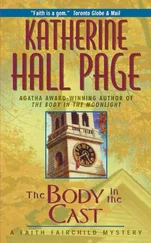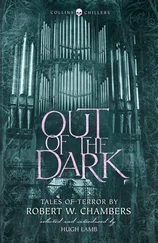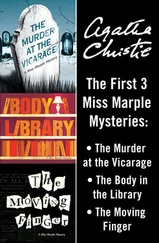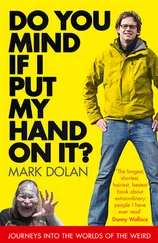Robert Monroe - Journeys out of the body, Practical Guidebook
Здесь есть возможность читать онлайн «Robert Monroe - Journeys out of the body, Practical Guidebook» весь текст электронной книги совершенно бесплатно (целиком полную версию без сокращений). В некоторых случаях можно слушать аудио, скачать через торрент в формате fb2 и присутствует краткое содержание. Жанр: Старинная литература, на английском языке. Описание произведения, (предисловие) а так же отзывы посетителей доступны на портале библиотеки ЛибКат.
- Название:Journeys out of the body, Practical Guidebook
- Автор:
- Жанр:
- Год:неизвестен
- ISBN:нет данных
- Рейтинг книги:5 / 5. Голосов: 1
-
Избранное:Добавить в избранное
- Отзывы:
-
Ваша оценка:
- 100
- 1
- 2
- 3
- 4
- 5
Journeys out of the body, Practical Guidebook: краткое содержание, описание и аннотация
Предлагаем к чтению аннотацию, описание, краткое содержание или предисловие (зависит от того, что написал сам автор книги «Journeys out of the body, Practical Guidebook»). Если вы не нашли необходимую информацию о книге — напишите в комментариях, мы постараемся отыскать её.
Journeys out of the body, Practical Guidebook — читать онлайн бесплатно полную книгу (весь текст) целиком
Ниже представлен текст книги, разбитый по страницам. Система сохранения места последней прочитанной страницы, позволяет с удобством читать онлайн бесплатно книгу «Journeys out of the body, Practical Guidebook», без необходимости каждый раз заново искать на чём Вы остановились. Поставьте закладку, и сможете в любой момент перейти на страницу, на которой закончили чтение.
Интервал:
Закладка:
C) To heaven.
D) To an episode of the movie Star Wars .
26. How will a deceased person differ from a prototype in the phase when correctly performing the technique for finding the person?
A) Only the practitioner himself can conjure up differences, or not see or perceive them.
B) The deceased will have a different timbre of voice.
C) There will be a radiant halo around the deceased’s head.
D) Physical perception of the deceased will be less realistic than in real life.
E) The deceased will not remember anything.
27. What difficulties can arise in the phase while obtaining information from animate sources of information?
A) Inability to remember information obtained.
B) Sources of information are silent.
C) Inadequateness of the sources of information.
D) Sexual attraction, if the source of information is of the opposite or desired sex.
E) Being given false information.
28. How might a practitioner accelerate the healing process of a cold that is characterized by a stuffy nose and a sore throat?
A) Maintaining and amplifying vibrations for the entire length of the phase, and entering it over several days in a row.
B) Taking aspirin and entering the phase over several days in a row.
C) Travelling to hot places in the phase and entering it over several days in a row.
D) Experiencing stressful situations over several phases.
E) Finding a doctor in the phase and asking him what it is best to do in real-life or even in the phase itself.
29. Which of the following achievements belong to Stephen LaBerge?
A) Founding the Lucidity Institute.
B) A Ph.D. in anthropology.
C) Scientifically proving that lucid dreaming is possible.
D) A Ph.D. in psychophysiology.
E) Proving that eye movements in the phase and in reality are synchronized.
30. Who of approached the study of the phase state from a pragmatic point-of-view that was totally devoid of occultism?
A) Stephen LaBerge
B) Robert Monroe
C) Sylvan Muldoon
D) Charles Leadbeater
E) Patricia Garfield
F) Carlos Castaneda
Appendix
ASSESSMENT OF PRACTITIONERS’
EXPERIENCES (CHAPTER 12)
These assessments of the practitioners’ experiences refer only to the specific descriptions that they submitted and are not meant as an assessment of their practice as a whole. Some of practitioners would easily be able to experience successful phases earning four to five points at other times. This especially concerns Boris Pronyakin, Alexander Dyrenkov, Boris Bender, and Alexei Teslenko. This is also possibly true of the other practitioners, with whom the author is not closely acquainted.
No. 1 Boris Pronyakin – 0.5 points
No. 2 Alexei Bakharev – 0.5 points
No. 3 Dmitry Markov – 0 points
No. 4 Ivan Yakovlev – 1.5 points
No. 5 Natalya Kozhenova – 1 point
No. 6 Alexander Furmenkov – 1 point
No.7 Roman Reutov – 3 points
No. 8 Alexander Dyrenkov – 1.5 points
No. 9 Svyatoslav Baranov – 2 points
No. 10 Oleg Sushchenko – 2.5 points
No. 11 Alexander Lelekov – 1.5 points
No. 12 Boris Bender – 2 points
No. 13 Alexei Teslenko – 3 points
ANSWERS TO THE FINAL TEST (CHAPTER 14)
1. A,B,C,D;
11. A,C,D,E;
21. A, B, D;
2. D;
12. A,D,A+D;
22. A, C, D;
3. B, C, D;
13. C;
23. E;
4. C;
14. D, E;
24. B;
5. A,B,C,D;
15. E;
25. –;
6. B;
16. B, F;
26. A;
7. –
17. C, E;
27. B,C,D,E;
8. C;
18. B, D;
28. B,C,E;
9. A, D, E;
19. –
29. A,C,D,E;
10. B, C;
20. A, C;
30. A, E;
A SIMPLIFIED DESCRIPTION OF THE EASIEST
METHOD FOR ENTERING THE PHASE
USING INDIRECT TECHNIQUES
Upon awakening, without moving or opening the eyes, immediately try to separate from one's body. The separation attempt should be carried out without any imagining, but rather with the desire to make a real movement without straining the muscles (rolling out, levitation, standing up, etc.).
If separation does not occur within three to five seconds, immediately try alternating several of the most effective techniques for three to five seconds each. When one of the techniques works, continue it for a longer period of time:
- Observing images: Try to examine and discern the pictures arising before closed eyes.
- Listening in: Attempt to hear sounds in the head and make these louder by listening in or strengthening the will;
- Rotating: Imagine rotating around the head-to-foot axis;
- Phantom wiggling: Try to move a part of the body without straining the muscles, and try to increase the range of movement;
- Straining the brain: Try straining the brain, which will lead to vibrations that may also be intensified by straining the brain.
As soon as one technique clearly starts to work, continue with it as long as progress is apparent, and then try to separate. If separation fails, return to the technique that was working.
Do not give up alternating through techniques until one minute has elapsed, but do not continue for more than two minutes. Separation from the body may be attempted periodically, especially if interesting sensations occur.
TAKE PART IN RESEARCH
Take part in the research of a technique. The technique of imagined sensations is described in Chapter 2 in the section on Secondary Techniques. This technique is also commonly known as the “cell phone technique”. While this guidebook was being written, experiments with this technique were conducted at the School of Out-of-Body Travel’s seminars. Results were astounding. Due to the fact that this technique is easy to understand and apply in practice, it could be the most straightforward and effective one for achieving the phase state. Almost every second attempt made with this technique has yielded results, provided it is employed as an indirect technique.
Due to this technique’s huge potential for popularizing and spreading knowledge of the phenomenon, anyone who is interested is invited to take part in a global experiment of the technique’s effectiveness. In addition to testing it, a researcher may propose the technique to interested persons or post it on the Internet to increase the number of practitioners. Please submit the results of your experiments with the technique to the e-mail address: aing@aing.ru Here it is:
THE CELL PHONE TECHNIQUE
The practice of this phase entry technique is to imagine the sensation that something is resting in the hand, desirably upon awakening without any physical movement. It is best to imagine a cell phone is in the hand because the modern person is quite accustomed to this sensation, although any other object will do. It is necessary to actively and attentively focus on the sensations in the palm of the hand. Most likely, the physical sensation of a phone lying in the hand will quickly arise. The sensation will become increasingly palpable. If a sensation does not arise within 10 seconds, the technique not going to work and it is time to switch to another one.
When the sensation of a phone in the hand occurs, focus every bit of attention on it. It should be noted that this will not be an imagined sensation, but a real one. This should be understood from the very beginning, and results should be expected. Once the sensation is stable, start feeling the mobile phone with the fingers. Physical sensations should be experienced. The physical body, of course, must not move or strain. If this does not work, only focus attention on the sensation of the phone lying in the hand and try to feel the phone with the fingers later. If feeling the phone with the fingers is successful, actively roll the phone around the hand, feeling all of its details.
Читать дальшеИнтервал:
Закладка:
Похожие книги на «Journeys out of the body, Practical Guidebook»
Представляем Вашему вниманию похожие книги на «Journeys out of the body, Practical Guidebook» списком для выбора. Мы отобрали схожую по названию и смыслу литературу в надежде предоставить читателям больше вариантов отыскать новые, интересные, ещё непрочитанные произведения.
Обсуждение, отзывы о книге «Journeys out of the body, Practical Guidebook» и просто собственные мнения читателей. Оставьте ваши комментарии, напишите, что Вы думаете о произведении, его смысле или главных героях. Укажите что конкретно понравилось, а что нет, и почему Вы так считаете.










